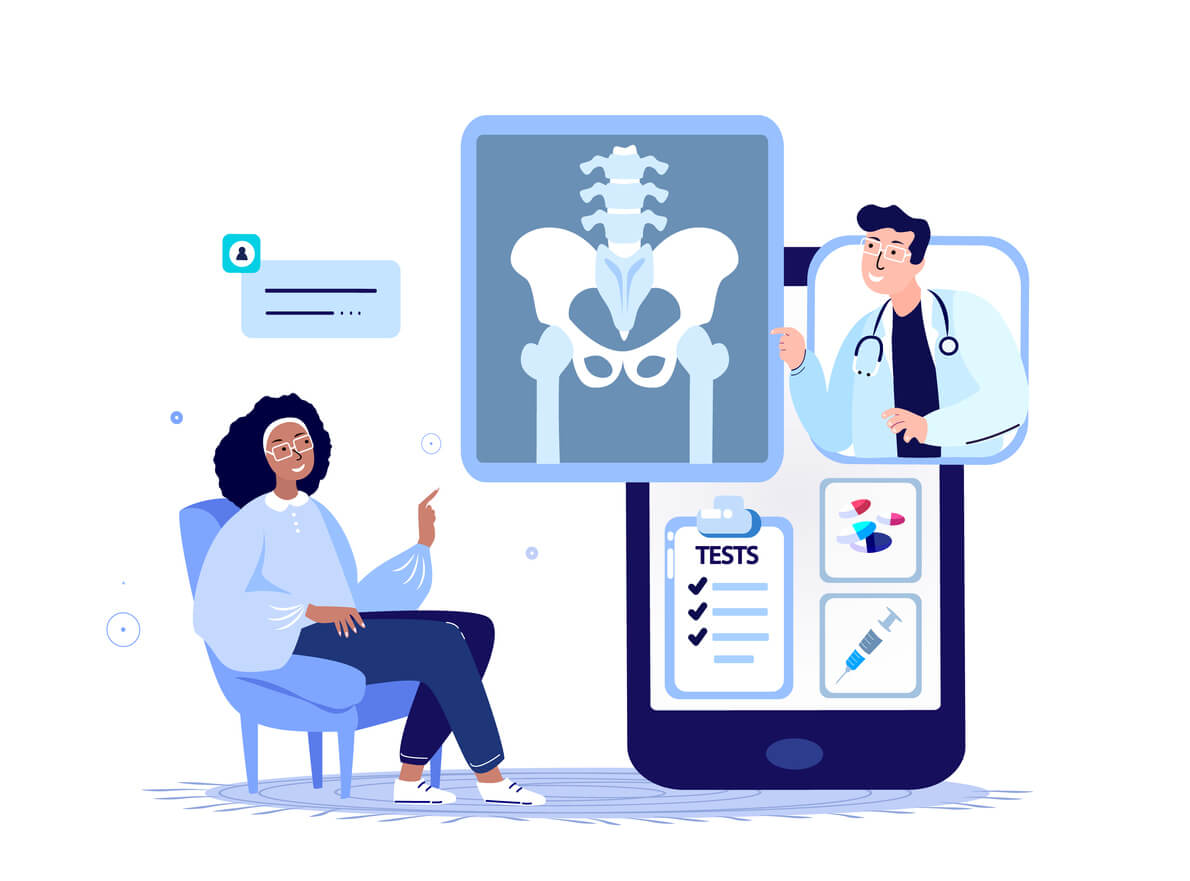Common hip injuries
Some common injuries to the hip include:
Hip fractures
Hip fractures are serious and painful injuries involving a break in one of the hip bones – usually near the top of the thigh. They occur most often in older people following a fall, but they can also occur spontaneously in people with osteoporosis. Younger people may also suffer a hip fracture in an accident. Urgent medical treatment is needed for a hip fracture. Surgery is often needed to repair or replace damaged bones.

Hip dislocation
This painful injury occurs when the ball at the top of the thigh bone comes completely out of its socket. Hip dislocations are most often caused by significant trauma, such as a car accident or heavy fall. People who’ve had a hip joint replacement may also be more likely to have a hip dislocation. Tissues surrounding the hip, including bones, ligaments, muscles and nerves, are often also damaged. A hip dislocation requires urgent medical attention because it can lead to lasting problems if left untreated.
Hip subluxation
This occurs when the hip joint comes partly out of its usual position. It causes similar symptoms to a dislocation – including pain, swelling, and trouble weight bearing – only less severe. Urgent medical care is needed. A hip subluxation is typically caused by an injury such as a fall or sporting accident. Some people are born with conditions (such as hip dysplasia) that can make their hip less stable, making a subluxation more likely.
Labral tear
The labrum is a special form of cartilage that helps keep the ball of the hip securely in its socket and aids smooth hip movement. Labral tears rarely occur on their own but can happen alongside other injuries. They are common in sports involving fast, sudden movements, like soccer and netball. People with hip abnormalities such as impingement or dysplasia may be more prone to labral tears. Labral tears can be very difficult to diagnose, and the cartilage does not easily heal. This makes it vital for this injury to be accurately diagnosed and properly managed.
Hip dysplasia
Hip dysplasia is a condition where the hip socket is not deep enough to hold the ball securely, leading to a slight dislocation. Usually present from birth, hip dysplasia is often diagnosed during childhood. However, it may not be discovered until it leads to pain, limping, arthritis or a dislocation in adulthood.
Soft tissue injuries
The muscles, ligaments and tendons around the hip can also be torn, strained or bruised as a result of injury. These injuries can cause pain, swelling, bruising and movement difficulties.
Our Hospitals
Find out more about the orthopaedic services at our hospitals.
NSW
Campbelltown Private Hospital
Hunter Valley Private Hospital
Nepean Private Hospital
Newcastle Private Hospital
Northern Beaches Hospital
Norwest Private Hospital
Prince of Wales Private Hospital Sydney Southwest Private Hospital
QLD
Brisbane Private Hospital
Gold Coast Private Hospital
Peninsula Private Hospital
Sunnybank Private Hospital
Contact Us
Need further assistance? For general queries on orthopaedic services at Healthscope, please contact us below. We're here to help.



